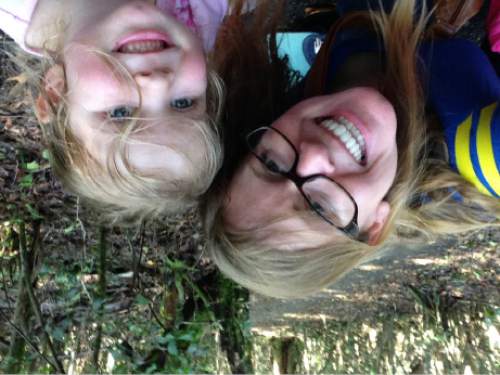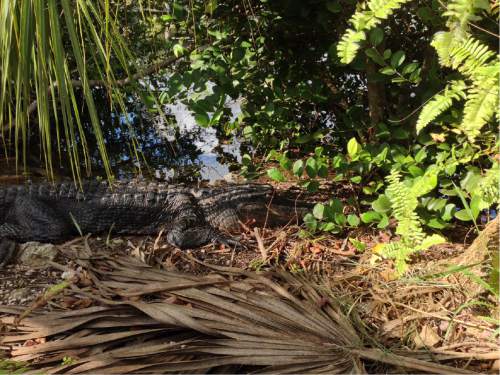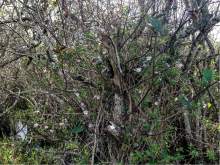This is an archived article that was published on sltrib.com in 2016, and information in the article may be outdated. It is provided only for personal research purposes and may not be reprinted.
People do dumb things with wild animals.
That's a fact of life in national parks. In the 1920s, mule deer fawns began to disappear from Yosemite as visitors "adopted" them as souvenir pets, according to an old park newsletter unearthed by Backpacker Magazine.
There were the two fishermen who pulled what they thought was a dead rattlesnake into their boat beneath Hoover Dam. They were forced to jump ship after it woke up and got mad, writes former ranger Jim Burnett, who was asked to help out after other tourists found a boat floating down the river with no passengers except the angry snake.
Photographer Jeff Vanuga watched a crowd of 20 tourists chasing a bear away from a lake at Grand Teton National Park in an attempt to take its picture, he told The Dodo. Sometimes the chase goes the other way, as tourists attempt selfies with elk, bison and moose.
So maybe I shouldn't have been shocked to see a tourist at Everglades spanking a gator.
I wish I were kidding.
But no.
A guy spanked an alligator. For what reason. My family and I were on an observation deck near a couple of gators on the green, swampy Anhinga Trail in February, the halfway point in our yearlong national parks tour. The alligators were resting near the deck and looked so chill that my daughter tried to lie down because they convinced her it was "nap time." The one time she actually wants to take a nap, and there are alligators all over the place.
A ranger told me they probably wouldn't have done anything. The only gator attacks in the park have been in water —including one last week. No gator ever has attacked a person on a hiking trail in Everglades, according to the park website.
But that doesn't mean people won't try to make it happen.
As I scooped up my daughter, I saw a man reach over the deck fence and start hitting a gator on the butt. Maybe he wanted the alligator to strike a better pose for a picture. Maybe he wanted an action shot. Maybe he hoped the alligator would get out a hat and cane and do a dance for us.
The man rapped on the gator's tail a couple of times. It shifted very slightly and did nothing else.
Most ill-advised behavior toward wildlife is at least well-intentioned. People feed squirrels because they believe the squirrels will enjoy it. They'll carry away a baby bison because they think it needs help. They'll pet bighorn sheep because they want to make friends. It's perhaps ignorant or self-centered to anthropomorphize wildlife this way, but not deliberately harmful.
I cannot imagine why someone would try to agitate a wild animal that's at peace.
The goal obviously was to make the gator uncomfortable enough to react in some way. Safety aside: How can a person think that isn't at least a little bit mean?
Few of the national parks I've visited rival Everglades for wildlife viewing. You'd have to try pretty hard not to see some magnificent animals, and any reasonably thoughtful person would want the best for them. Even if we end up being mistaken about what is best, it's worth at least trying to do right by other creatures. I think most humans tend to see exciting animals as "friends," even if we know they reciprocate none of our affection. It's interesting for us to see how they satisfy some of the same needs we have — food, water and rest. Watching a great egret plunge for its dinner or a gator take a nap is rewarding partly because we are moved to relate — even to a cold-blooded creature that has been doing its own evolutionary thing for a very, very long time.
Empathy and decent intentions befit our species. Hitting an animal just to ruin its sleep is a failure on both points — even if the animal turns out to be too thick-skinned to care.
This 1.2-mile hike allows visitors to see the best of Everglades' fauna and flora in a short, level trip that is wheelchair-accessible and suitable for children (mind them among the animals, though). It starts at the Royal Palm visitors center, about four miles west then south from the park entrance. The Anhinga boardwalk loop is east of the visitors center and covers about 0.8 miles of grassy marsh rich with birds and other wildlife. We saw the eponymous anhinga, great egret, purple gallinule, green heron, double-crested cormorant, butterflies, dragonflies, turtles, fish and four or five alligators. Please don't spank them and don't allow children to put hands or feet in the water or dangle over the boardwalk.
The Gumbo Limbo trail loops through a mercifully-shaded, jungle-like forest of gumbo limbo trees, air plants and other interesting plants south of the visitors center. It is just 0.4 miles and ends in the parking lot if you hike it clockwise. You can see the route on Google Maps.
Next national park trip report — No. 7, Bryce Canyon: The $10 lifetime senior pass needs to end
Previous national park trip reports
12 Months of National Parks — No. 1, Acadia: Small children love nature, but on their own level
12 Months of National Parks — No. 2, Capitol Reef: 'People shouldn't be here'
12 Months of National Parks — No. 3, Arches: Are national park rules too strict?
12 Months of National Parks — No. 4, Canyonlands: The best fun may require a child's eyes
12 Months of National Parks — No. 5, Biscayne: A threatened park claws its way forward
—Erin Alberty
ealberty@sltrib.com
Twitter: @erinalberty









